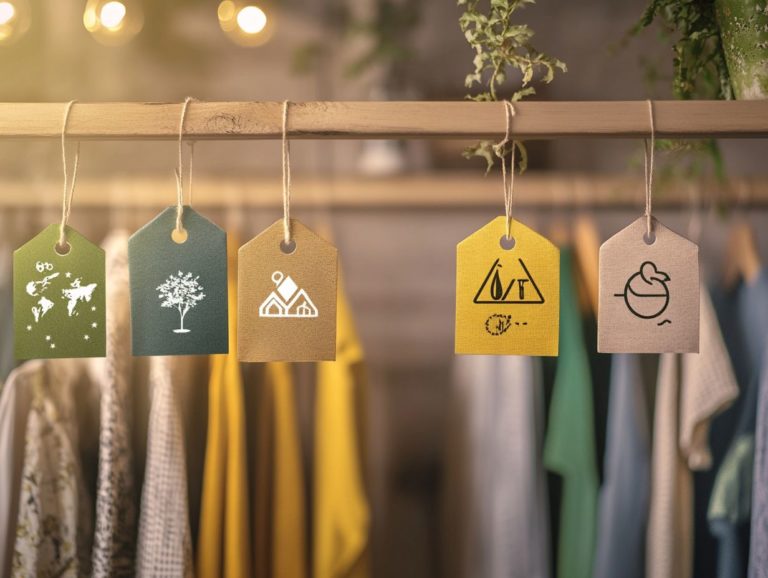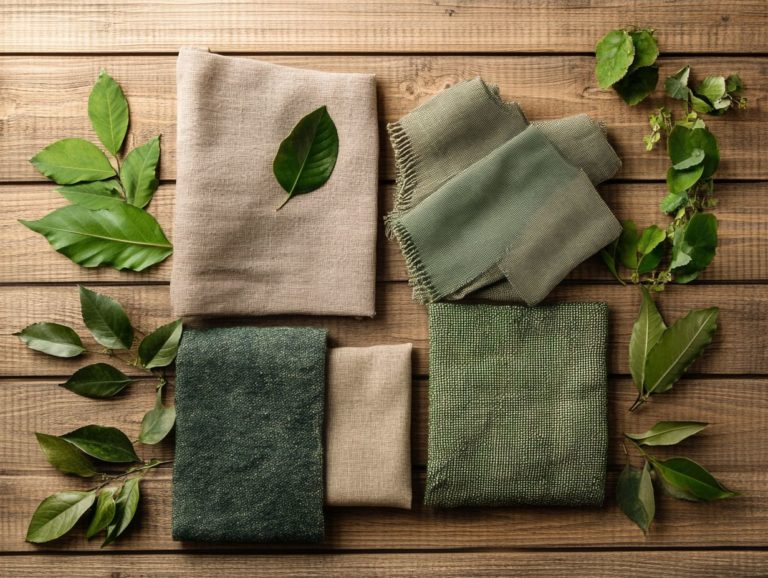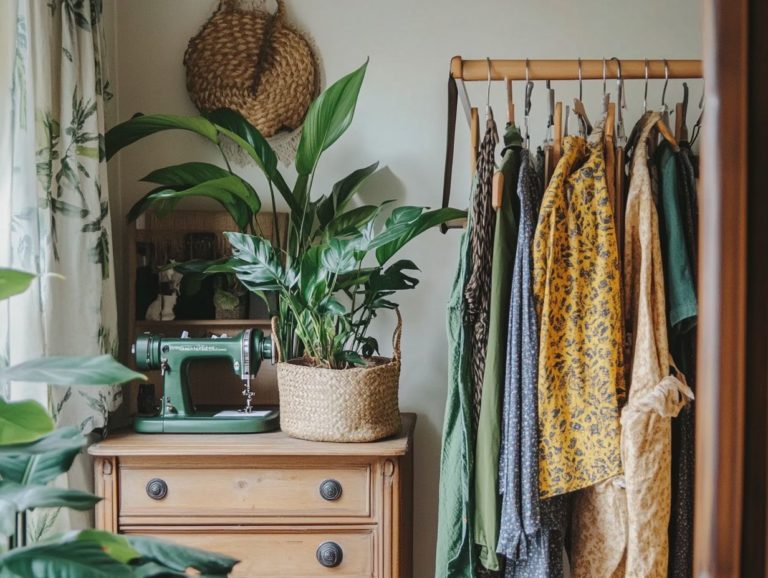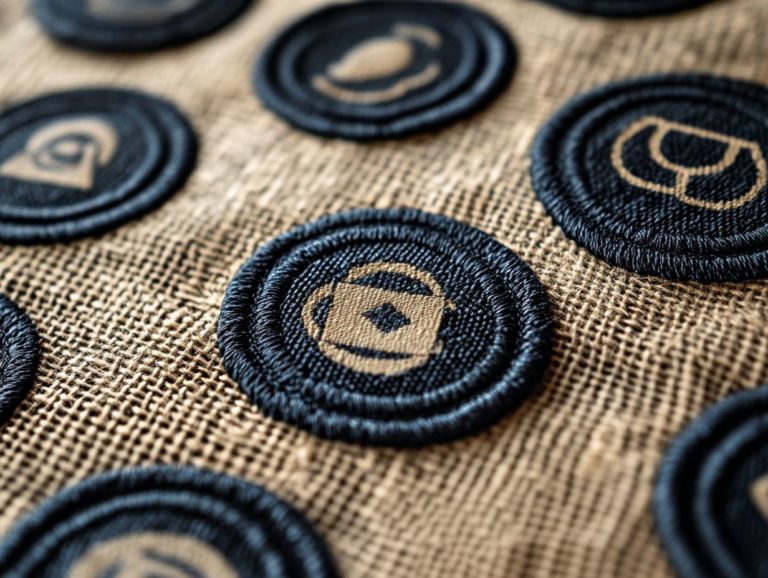5 Eco-Friendly Fashion Hacks You Should Try
In a world that s increasingly attuned to its environmental impact, the fashion industry stands at a crucial juncture.
With the surge of fast fashion, your closet may have become a repository of items that often find their way to landfills, adding to pollution and waste. However, it doesn t have to remain this way.
Let’s explore five eco-friendly fashion hacks that can help you reduce your carbon footprint and curate a more sustainable wardrobe.
From thrifting to championing ethical brands, you ll discover how making mindful choices can benefit both you and the planet.
Embark on this journey toward a more conscious approach to fashion!
Contents
- Key Takeaways:
- 1. Shop Second-Hand or Thrift
- 2. Choose Sustainable Materials
- 3. Support Ethical and Fair Trade Brands
- 4. Repurpose Old Clothing
- 5. Rent Clothing for Special Occasions
- What Is Eco-Friendly Fashion and Why Is It Important?
- What Are the Negative Impacts of Fast Fashion on the Environment?
- How Can Consumers Make More Sustainable Fashion Choices?
- What Are Some Other Ways to Reduce Clothing Waste?
- How Can Fashion Brands Become More Sustainable?
- What Are the Benefits of Incorporating Eco-Friendly Practices in the Fashion Industry?
- Frequently Asked Questions
- 1. What are some eco-friendly fashion hacks I can try?
- 2. How does shopping second-hand help the environment?
- 3. What are some ways to repurpose old clothing?
- 4. How can I incorporate sustainable fabrics into my wardrobe?
- 5. What are the benefits of using natural and biodegradable laundry detergent?
- 6. How does participating in clothing swaps help the environment?
Key Takeaways:
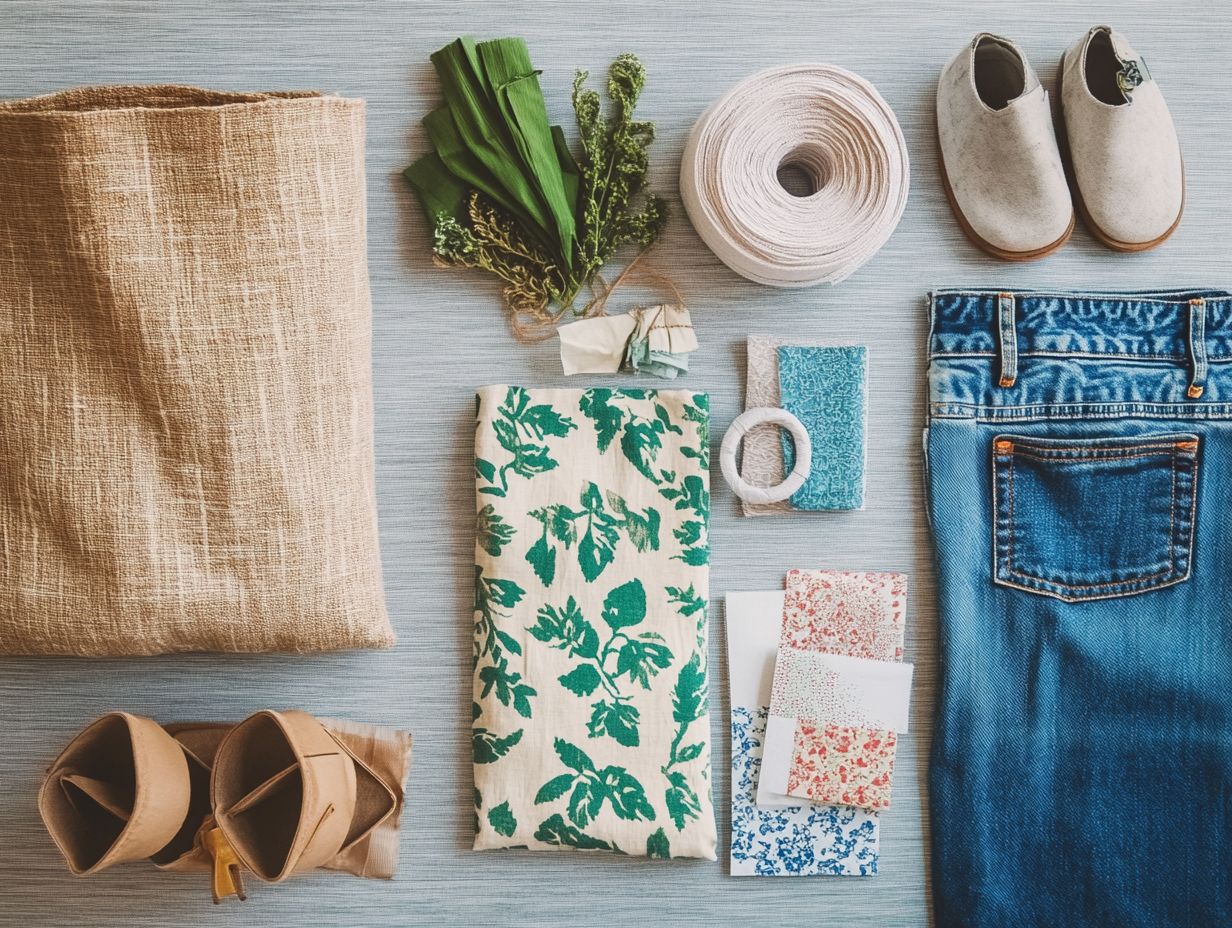
- Opt for second-hand or thrift shopping to reduce clothing waste and support circular fashion.
- Look for sustainable materials such as organic cotton, linen, or recycled fabrics when purchasing new clothing.
- Choose to support ethical and fair trade brands that prioritize workers’ rights and sustainable production practices.
1. Shop Second-Hand or Thrift
Shopping second-hand or hitting up thrift stores isn t just a savvy choice; it s a powerful fashion statement that allows you to uncover unique treasures while supporting local communities and cutting down on textile waste. This way, you re making a real difference for both the environment and the clothing lifecycle.
When you choose thrift shopping, you re playing a significant role in reducing carbon emissions. In fact, the fashion industry contributes about 10% of humanity’s carbon footprint, according to a report by Good On You. By opting for second-hand items, you re extending the life of clothing and dramatically shrinking that footprint.
There s an undeniable thrill in discovering vintage gems whether it s a classic denim jacket or a quirky accessory that transforms shopping from a mundane task into an exhilarating treasure hunt.
Buying second-hand also means you re supporting your community. Many thrift stores donate their proceeds to local charities, weaving a rich social fabric that benefits everyone.
According to EcoCult, by choosing thrifted items, you can make a huge impact by diverting around 3.3 million tons of textile waste from landfills each year. This conscious choice has a profound impact, showcasing just how powerful your shopping decisions can be. For more options, consider these eco-friendly fashion swaps for your closet.
2. Choose Sustainable Materials
Choosing sustainable materials, like organic cotton or other eco-friendly fabrics, is key to building a wardrobe that reflects your commitment to ethical practices and supports brands dedicated to minimizing their environmental impact while enhancing the longevity of your clothing.
By exploring options such as Tencel (made from sustainably sourced trees) or recycled polyester (crafted from plastic bottles), you can make informed choices that benefit both the planet and your personal style. When selecting sustainable brands, it’s essential to seek out certifications like GOTS (Global Organic Textile Standard), which ensures that the fabric is certified organic and made without harming the planet, or Fair Trade.
Durability is crucial; it not only decreases the frequency of your purchases, encouraging a more intentional consumer mindset but also reduces waste in the long run. Embracing a culture of quality over quantity allows you to truly value and invest in lasting pieces that make a difference.
3. Support Ethical and Fair Trade Brands
Supporting ethical and fair trade brands is essential for cultivating a sustainable fashion industry that champions worker rights, environmental stewardship, and transparency. Your choices can lead to meaningful changes in the clothing market.
By selecting brands that align with these values, you actively contribute to a more equitable global economy. These brands often prioritize fair wages, safe working conditions, and a minimized ecological footprint, fostering a fashion landscape that honors both people and the planet.
Good On You is a valuable tool for identifying these ethical brands, shining a light on those committed to responsible practices. When you make thoughtful decisions regarding your purchases, you not only endorse ethical labor practices but also set a powerful example for the industry, encouraging others to embrace sustainability as well.
Start making these changes today and join the movement towards a sustainable future!
4. Repurpose Old Clothing
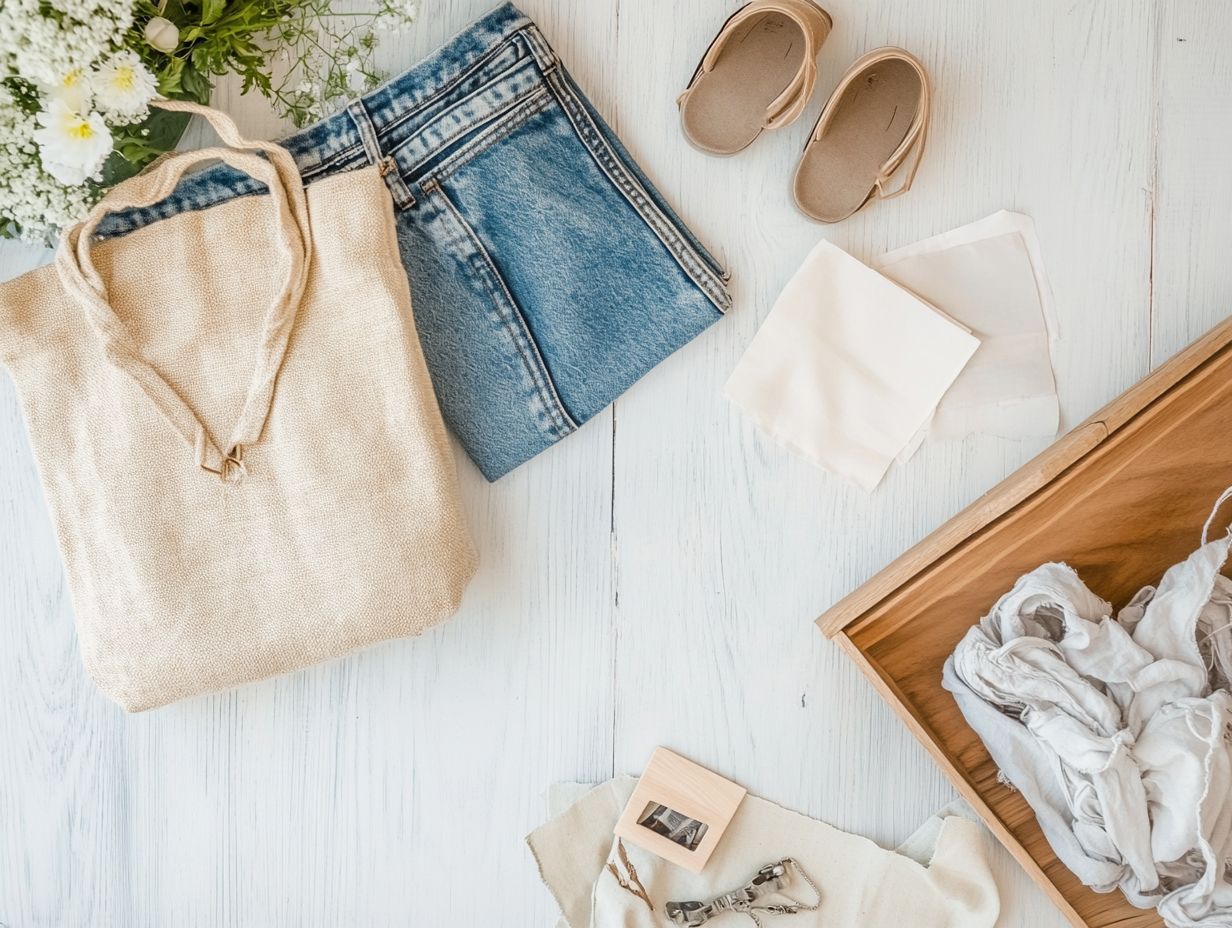
Repurposing your old clothing through DIY techniques not only helps reduce textile waste but also allows you to embrace your creative flair. You can make a meaningful contribution to sustainable fashion practices.
For example, transform an old pair of jeans into a stylish tote bag or convert a worn-out t-shirt into a unique pillow cover. This process nurtures your individuality and emphasizes the emotional value woven into clothing that holds cherished memories.
As you breathe new life into these items, they acquire a deeper sentimental value. They serve as reminders of experiences or milestones in your life. Numerous recycling programs are available to welcome your unwanted garments while promoting the art of repurposing.
Start repurposing your clothes today to join the movement toward sustainable fashion! This makes it easier for you to discover resources and ideas to kickstart your own DIY projects.
5. Rent Clothing for Special Occasions
Renting clothing for special occasions presents a sustainable and economical alternative to fast fashion. This allows you to enjoy high-quality garments without contributing to environmental degradation or textile waste.
This innovative approach promotes a more eco-friendly wardrobe choice and encourages you to explore diverse styles without the hefty price tag of ownership. Platforms like Rent the Runway and GlamCorner provide an impressive selection of designer pieces available for rent at a fraction of their retail price. Additionally, attending sustainable fashion events can further enhance your understanding of eco-conscious choices in fashion.
As the trend of renting clothing gains momentum, it nurtures a culture of mindful consumption. This reduces the overall demand for new garments while offering you memorable fashion experiences.
This shift enhances your personal style and contributes positively to the fashion industry’s transition toward sustainability.
What Is Eco-Friendly Fashion and Why Is It Important?
Eco-friendly fashion is all about embracing practices that significantly reduce the environmental impact of clothing production and consumption. This focus is vital for saving our planet and promoting sustainability within the fashion industry.
This approach involves using organic materials, implementing ethical production methods, and embracing environmentally conscious design, each playing a vital role in reducing carbon emissions. More brands are recognizing the importance of ethical practices, moving away from traditional methods that often prioritize profit over the planet. Incorporating 5 must-have pieces for a sustainable wardrobe can further enhance your commitment to sustainability.
The current movement emphasizes sustainable materials and champions circularity, which is the practice of recycling and reusing materials.
Community initiatives and collaborations among brands are essential. They foster awareness and drive collective efforts toward a more responsible fashion ecosystem. Together, these changes reflect a commitment to both people and the planet, ushering in a new era of mindful consumerism that you can be proud to support.
What Are the Negative Impacts of Fast Fashion on the Environment?
Fast fashion has serious repercussions for the environment, significantly increasing carbon emissions and generating alarming amounts of textile waste. This undermines sustainable practices and complicates the entire clothing lifecycle.
The lightning-fast production cycles of these brands release around 1.2 billion tonnes of carbon dioxide each year. They also contribute to 20% of global wastewater, as dyes and chemicals seep into rivers and waterways, polluting our precious ecosystems.
The exploitation of workers, mostly in developing countries, starkly contrasts with ethical production standards. Many of these laborers earn less than the minimum wage, highlighting a troubling reality in the fashion industry.
While the allure of quick, affordable fashion persists, sustainable alternatives like eco-friendly materials and responsible manufacturing practices hold great promise. For a more conscious shopping experience, consider these 5 tips for a sustainable fashion shopping trip. These alternatives can help mitigate environmental damage and pave the way for a more equitable industry.
How Can Consumers Make More Sustainable Fashion Choices?
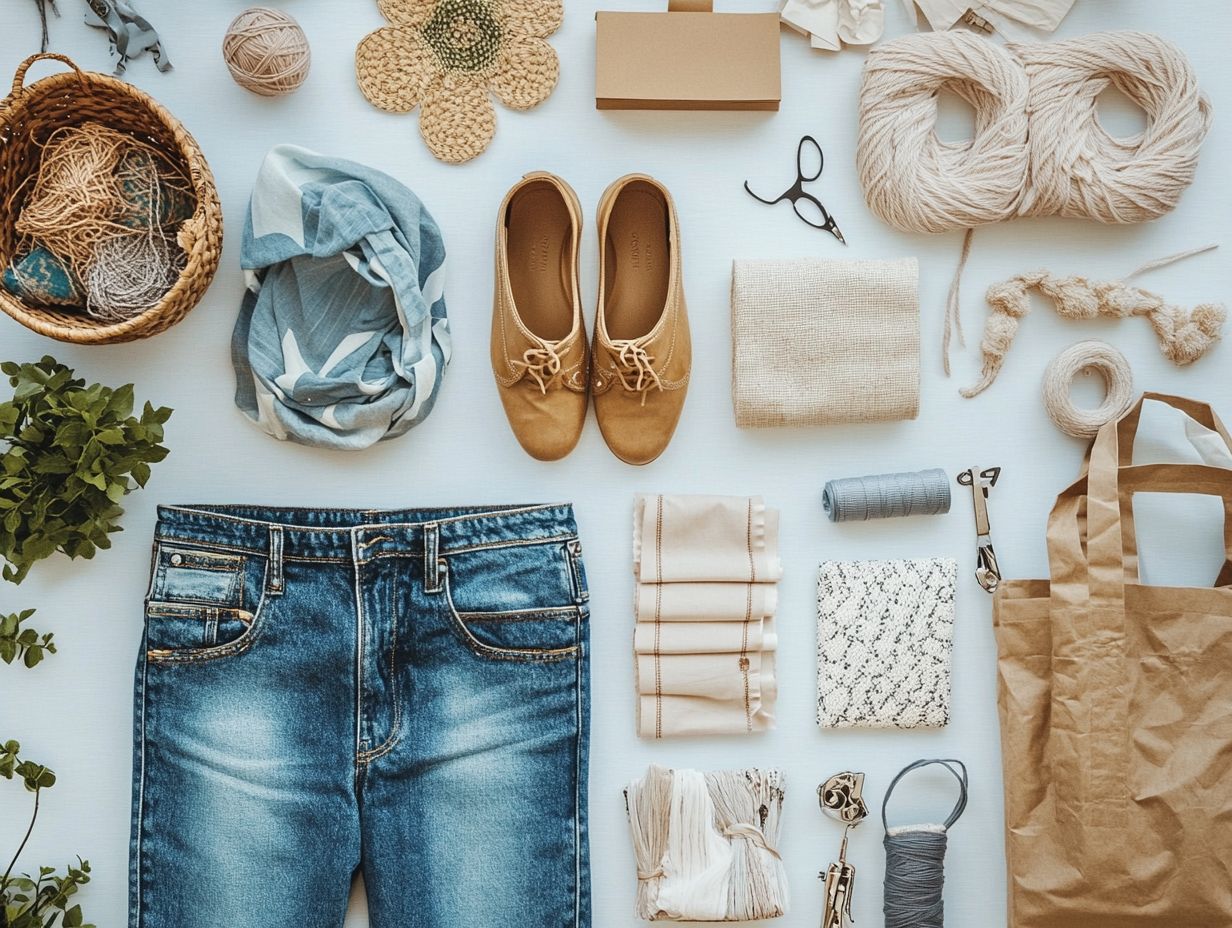
You can make more sustainable fashion choices by adopting a conscious consumer mindset. Prioritize durability and actively seek out ethical brands that resonate with sustainable practices and responsible clothing care.
By doing this, you ll be able to evaluate the impact of your purchases not just on the environment but also on the communities involved in production. It s crucial to research brands to understand how they source their materials and their manufacturing processes. This knowledge empowers you to make informed choices. These choices contribute to responsible consumption.
Investing in high-quality garments, which may come with a higher initial price tag, can ultimately save you money in the long run by ensuring they last longer while retaining their shape and color.
Regular maintenance, like proper washing and storage, can significantly extend the life of your clothing, allowing you to cultivate a wardrobe that champions sustainability with a focus on creating a zero waste fashion plan.
What Are Some Other Ways to Reduce Clothing Waste?
Reducing clothing waste can be accomplished through a variety of meaningful avenues. You might consider participating in recycling programs, donating unused garments, or attending swap events. Not only do these actions minimize waste, but they also help build a community of fashion lovers focused on sustainability.
By actively engaging in these practices, you contribute to a culture that values mindful consumption. For example, you can explore 5 ways to make your wardrobe more sustainable by joining a local charity’s donation drive and making a difference today! This reinforces the belief that fashion can uplift rather than deplete resources.
Community-led swap events, particularly in urban areas, offer a delightful way for you to refresh your wardrobe without the weight of excessive purchasing. These fun events create a sense of teamwork and excitement! Notable initiatives, like the Clothing Swap at the city park, have sparked excitement around sustainable fashion, attracting crowds and inspiring others to reconsider their shopping habits. To explore more, check out 5 stylish ways to wear sustainable fabrics.
Through such collaborative efforts, reducing clothing waste transforms into a shared journey. This not only highlights sustainable practices but also forges lasting connections within the community.
How Can Fashion Brands Become More Sustainable?
You can elevate your fashion brand’s sustainability by embracing eco-friendly practices, ensuring transparency throughout your supply chain, and securing certifications that reflect your commitment to ethical standards.
A highly effective approach is sustainable sourcing, which means using materials that are good for the planet, like recycled fabrics or those from well-managed forests. You can further enhance your sustainability efforts by adopting production methods that minimize waste and reduce carbon footprints, such as utilizing water-efficient techniques or renewable energy sources. Additionally, consider exploring zero waste fashion tips for a sustainable closet to make more eco-friendly choices.
Look to companies like Patagonia and Stella McCartney, which have successfully woven these principles into their operations, proving that it’s entirely feasible to be both profitable and eco-conscious. If you’re seeking guidance on how to make sustainable fashion choices daily, platforms like Good On You offer insightful evaluations of brands, giving you the power to make informed choices while encouraging companies to improve their sustainability practices.
How will you choose to make a difference in the fashion world?
What Are the Benefits of Incorporating Eco-Friendly Practices in the Fashion Industry?
Incorporating eco-friendly practices into your fashion endeavors presents a wealth of benefits. These practices minimize environmental impact while boosting consumer loyalty.
They also cultivate a strong commitment to sustainability that resonates with today’s conscious shoppers. This shift not only elevates your brand’s image but also attracts a growing demographic that values ethical consumption.
Brands like Patagonia and Stella McCartney serve as shining examples, integrating sustainable materials into their collections and fostering transparency throughout their supply chains. As a result, consumers feel a deeper connection to these brands, recognizing that their purchases contribute to meaningful positive change.
By embracing these practices, you may find that business costs decrease over time, as sustainable methods often lead to more efficient resource utilization. The shift towards sustainability is not just a trend; it’s becoming essential for our future!
Frequently Asked Questions
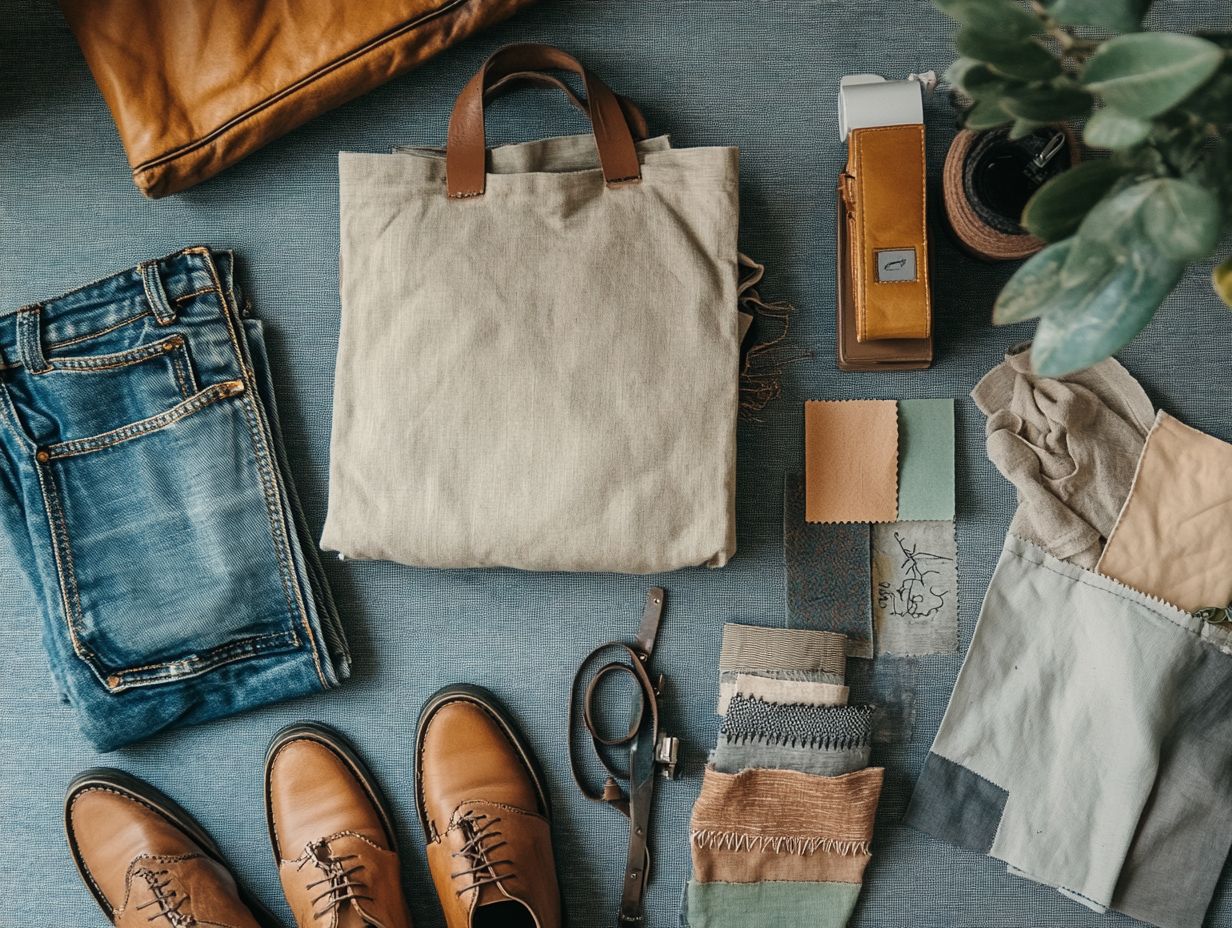
1. What are some eco-friendly fashion hacks I can try?
Some eco-friendly fashion hacks include shopping second-hand, repurposing old clothing, investing in sustainable fabrics, using natural and biodegradable laundry detergent, and participating in clothing swaps.
2. How does shopping second-hand help the environment?
Shopping second-hand helps by reducing the demand for new clothing production, a major source of pollution and waste. It also gives clothing a second life, preventing it from ending up in landfills.
3. What are some ways to repurpose old clothing?
Creative ways to repurpose old clothing include turning a t-shirt into a tote bag, making a denim skirt from old jeans, or using fabric scraps to create a patchwork design. The possibilities are endless!
4. How can I incorporate sustainable fabrics into my wardrobe?
You can incorporate sustainable fabrics by choosing materials like organic cotton, hemp, and bamboo. These fabrics are made using environmentally friendly practices and are often more durable than conventional fabrics.
5. What are the benefits of using natural and biodegradable laundry detergent?
Natural and biodegradable laundry detergent is better for the environment because it avoids harsh chemicals and synthetic fragrances. It breaks down easily in water, reducing its impact on aquatic life. It is also gentler on your skin and can help prevent irritation and allergies.
6. How does participating in clothing swaps help the environment?
Participating in clothing swaps reduces the need for new clothing production, thus minimizing the environmental impact of the fashion industry. It promotes a more circular and sustainable approach to fashion consumption.
What eco-friendly fashion tips do you use? Share with us!

